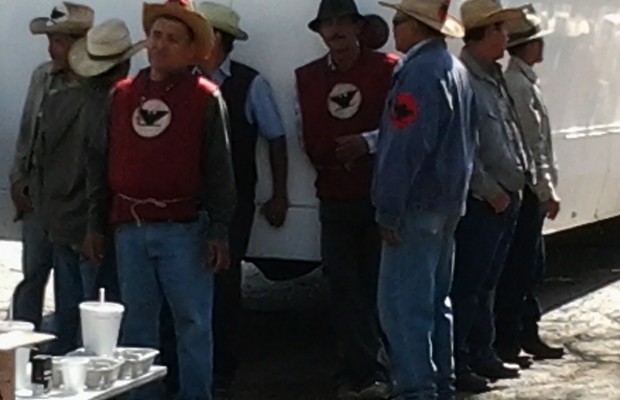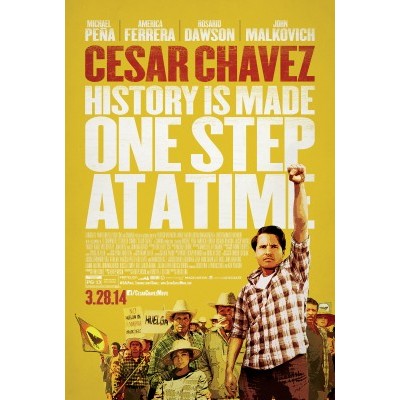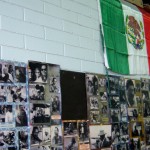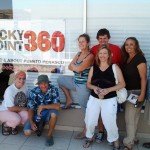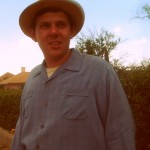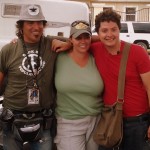At one of our final stops before leaving the Phoenix area for the journey back to Puerto Peñasco, a preteen entering the store wearing a red t-shirt with black lettering caught my eye. The shirt read, “Cesar Chavez Middle School.” I thought about the entire reason we had driven up to Phoenix this past weekend, wondering if between his chips and soda the young middle-schooler knew about the man behind the name, or about the new movie depicting parts of Chavez’s life. It also sparked memories, which had been running through my mind all weekend, of Sonora’s role (and even that of folk from Puerto Peñasco) in bringing director Diego Luna’s film to life.
This weekend, the film Cesar Chavez, starring Michael Peña, Rosario Dawson, America Ferrara, John Malkovich, and Jacob Vargas, hit theaters in the U.S, just days before what would have been Chavez’s 87th birthday on March 31st. The film debuted earlier this year at the Berlin Film Festival, and recently won an audience award at Austin’s South by Southwest Festival.
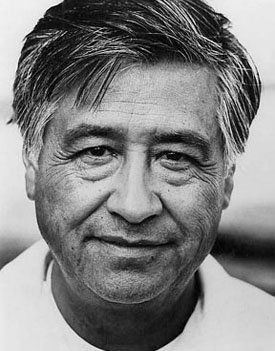 Just about two years ago, the Chavez film crew and casting agents set up camp in Sonora’s grape fields and small towns, which have now been captured for eternity as background in sharing an important part of the iconic Mexican American farm worker organizer’s experience.
Just about two years ago, the Chavez film crew and casting agents set up camp in Sonora’s grape fields and small towns, which have now been captured for eternity as background in sharing an important part of the iconic Mexican American farm worker organizer’s experience.
César Chavez’s own story began in Yuma, AZ before moving on to Delano, CA where he, along with Dolores Huerta among others, was one of the key founders of the National Farm Workers Union (which became United Farm Workers). Chavez passed away in 1993 and for years people had sought the Chavez family’s permission to make a film about Cesar. After being the first to receive the family’s permission, in 2012 Mexican director/actor Diego Luna, with a script written by Keir Pearson and Timothy J. Sexton was welcomed into the landscapes of Sonora to film the biopic. Luna, who is one of the founders of the Canana production company with fellow Mexican actor Gael García Bernal and producer Pablo Cruz, had decided to transport the story set in the grape fields of Delano, CA to those found just north of Hermosillo.
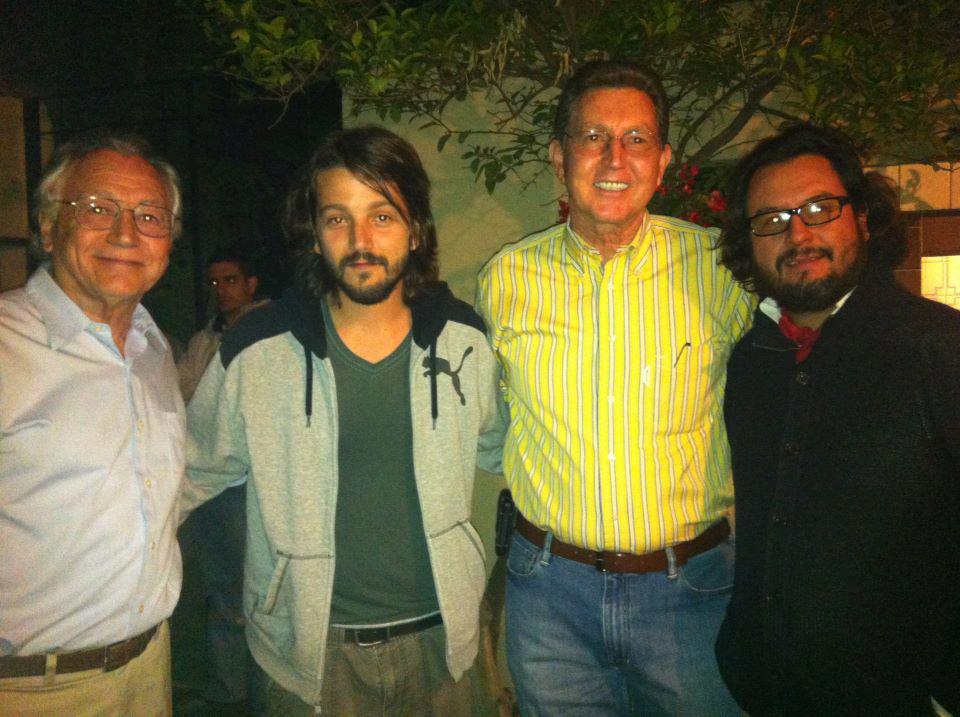
Shortly following the announcement Chavez would be filmed in Sonora, local residents from Hermosillo to San Carlos and Alamos, and yes, even Puerto Peñasco, were sought out as extras along with the slight possibility of getting lines. In April 2012, we assisted the local Convention and Visitors Bureau (OCV) in sending out a casting call. Nearly 100 people in Puerto Peñasco took part in three days of casting with Chavez casting assistant (and actor in his own right) Emilio Merritt. Merritt similarly conducted casting in San Carlos, where many “gringo” roles were filled given its proximity to Hermosillo, and of course in Hermosillo itself. Still, Puerto Peñasco offered its own crop of possibilities and a handful of people were selected for a second casting session…in Hermosillo…in front of director Diego Luna and producer Pablo Cruz!
As the (…done more out of eager interest than anything) casting assistant’s assistant, on the day of the Hermosillo casting session, six of us piled into two cars and headed south for the 5½ hour trek past olive groves and scours of asparagus and grape fields to Sonora’s City of Sun. There we met up with two other Puerto Peñasco silver-screen hopefuls and the five possible foremen compared strategies and tips before each individually met with Luna and Cruz. A short time later we were informed that indeed, one Puerto Peñasco prospect (Bob Snyder) fit the bill and was cast in a brief yet important part of the film – one which in fact illustrates how Filipino American farm workers, led by Larry Itliong, were among the first to stand up for their rights, which then drew the support of Chavez and the UFW.
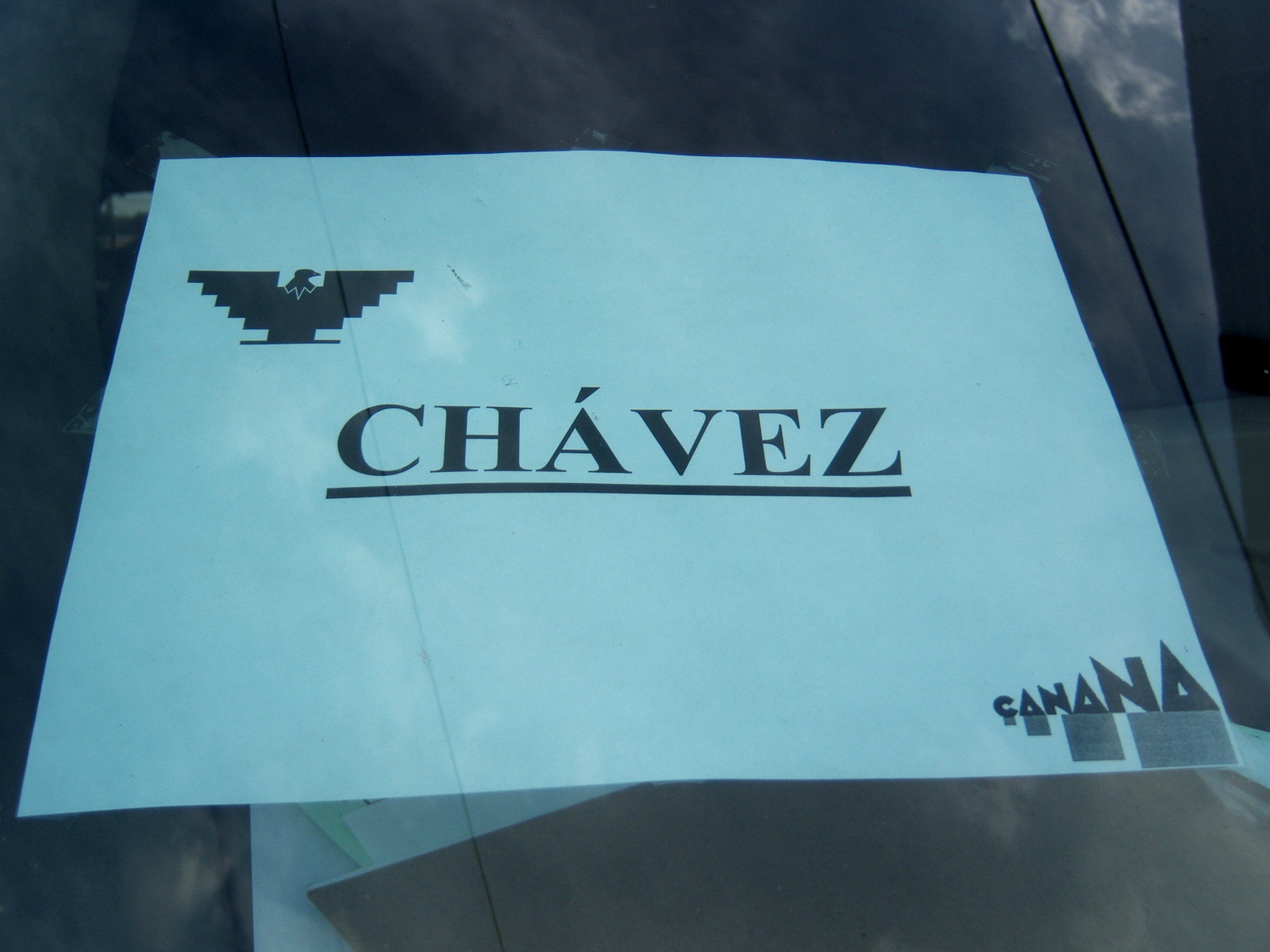 A month passed, and another call came. The film crew, which had moved from the grape fields to the mining mountain town of Cananea, was looking for “anglo” extras as all interested folk from San Carlos had already been cast in one way or another. Once again, eight of us piled into two cars and headed out – first for a night in Nogales and then an early morning call in Cananea. I had arranged for six extras, though once we got there the other two (myself included) were thrown into era-specific garb and directed to the scene. I was transformed into a nun. A few days later, another call came, and another familiar face cast into a role – a bully in a car.
A month passed, and another call came. The film crew, which had moved from the grape fields to the mining mountain town of Cananea, was looking for “anglo” extras as all interested folk from San Carlos had already been cast in one way or another. Once again, eight of us piled into two cars and headed out – first for a night in Nogales and then an early morning call in Cananea. I had arranged for six extras, though once we got there the other two (myself included) were thrown into era-specific garb and directed to the scene. I was transformed into a nun. A few days later, another call came, and another familiar face cast into a role – a bully in a car.
This past Thursday evening, one day before the film opened nationally, sitting in a nearly private theater with our group of 6 (and just a handful of others), the weight and significance of the entire experience rushed over me once more. The excitement was palpable! The story powerful! ..and suddenly, there was Bob! When the scene for the beginning of the walk from Delano to Sacramento began, we (barely) spotted members of the Puerto Peñasco extra crew in the background…ah yes, and one of the nuns.
I usually don’t stay through all the credits after a movie, but this time was different. It was moving to see notes of gratitude come across the screen: thanking the State of Sonora, Governor Guillermo Padres, the Sonoran Tourism Promotion Commission, and of course the communities of Sonora for their support and assistance in the making of this film.
While the film is powerful in its own right given the value of Cesar Chavez’s legacy in the U.S., not to mention the number of schools, parks, avenues, and plazas in his namesake across the country, the character that mysteriously came to life for me was Chavez’s wife Helen (depicted by America Ferrara). Alongside Rosario Dawson as the infamous Dolores Huerta, Ferrara lends audiences a glimpse behind the scenes of life with an organizer, whose non-violent tactics included periods of hunger-strikes, leading boycotts, jail time, and a 300 mile pilgrimage to bring attention to the plight of farm workers…..
“Let me get the door…” says the teen with the Cesar Chavez Middle School t-shirt.
“Thanks, I like your shirt,” I reply.
